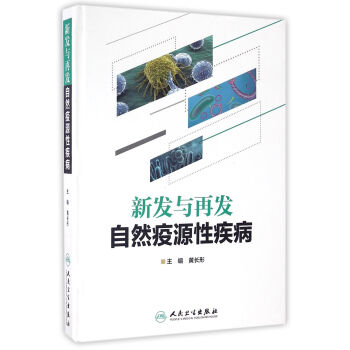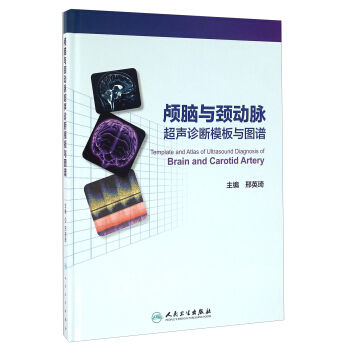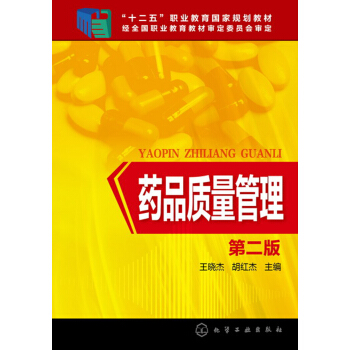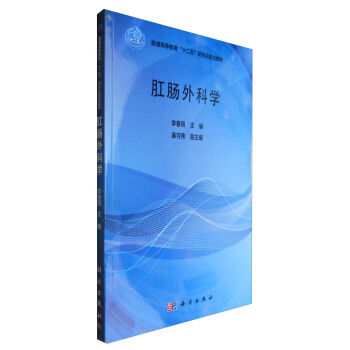![心脏外科解剖学(英文版) [Surgical Atlas of Cardiac Anatomy]](https://pic.windowsfront.com/11975635/583e871dN3f127369.jpg)

具体描述
内容简介
The book is based primarily on real images in cardiac surgical anatomy with a focus on congenital heart defects. Anatomy is one of the most fundamental disciplines on which clinical practices in surgical departments are based, and it is of great significance ptuticularly for the understanding and treatment of congenital heart defects. In such disciplines, practical experiences are much more important than are theoretic knowledge and instruments. My hope is that this unique book, which analyzes different kinds of cardiac malformation specimens in depth, will inspire colleagues to further develop novel methods in the diagnosis and treatment of congenital heart defects.内页插图
目录
1 Cardiac Anatomy: Nomenclature and Abbreviations1.1 Nomenclature of Cardiac Anatomy
1.1.1 Right Atrium (RA)
1.1.2 Right Atrial Appendage (RAA)
1.1.3 Left Atrium (LA)
1.1.4 Left Atrial Appendage (LAA)
1.1.5 Right Ventricle (RV)
1.1.6 Tricuspid Valve (TV)
1.1.7 Left Ventricle (LV)
1.1.8 Mitral Valve (MV)
1.1.9 The Posterior Cross of the Heart
1.1.10 Interatrial Septum (Atrial Septum)
1.1.11 Interventricular Septum (Ventricular Septum)
1.1.12 Atrioventricular Septum
1.1.13 Aorta
1.1.14 Main Pulmonary Artery (Pulmonary Trunk)
1.2 Malformations of the Heart
1.2.1 Atrial Septal Defect (ASD)
1.2.2 Atrioventricular Septal Defect
1.2.3 Single Ventricle
1.2.4 Left Ventricle Dysplasia
1.2.5 Tetralogy of Fallot (TOF)
1.2.6 Double-Outlet Right Ventricle (DORV)
1.2.7 Double-Oudet Left Ventricle (DOLV)
1.2.8 Complete Transposition of the Great Arteries
1.2.9 Corrective Transposition of the Great Arteries
1.2.10 Pulmonary Artery Atresia (PAA)
1.2.11 Obstruction of the Right Outflowof the Ventricular Tract (ROVT)
1.2.12 Persistent Truncus Arteriosus
1.2.13 Aortopulmonary Window
1.3 Nomenclature and Acronyms
2 Position and Observation of the Heart and Surgical Approaches
2.1 Position of the Heart
2.2 Observation ofthe Heart
2.3 Surgical Approaches to the Heart
2.3.1 Thoracotomy
2.3.2 Anatomical Surgical Features
3 The Right Atrium
3.1 General Considerations
3.1.1 Location
3.1.2 Morphological Characteristics
3.1.3 Atrial Septum Atrioventricular Septum and Triangle of Koch
3.2 Surgical Incision
4 The Right Ventricle
4.1 General Considerations
4.1.1 Position
4.1.2 Structural Characteristics
4.2 Right Ventricular Wall and Surgical Approaches
4.3 Right Ventricular Cavity Divisions
4.3.1 Sinus Portion
4.3.2 Trabecular Portion
4.3.3 Infundibulum
4.4 Tricuspid Valve Device
4.4.1 Characteristics
4.4.2 Tricuspid Valve Surgery
5 The Coronary Artery
5.1 Coronary Artery Anatomy
5.1.1 The Left Main Coronary Artery
5.1.2 The Right Coronary Artery
5.2 Coronary Artery Exposure in CABG
6 The Conduction System of the Heart
6.1 General Considerations
6.1.1 Sinoatrial Node
6.1.2 Atrioventricular Node
6.1.3 The Internodal Conduction Bundle
6.1.4 The Bundle of His and Its Branches
6.2 Specimen Demonstrations
7 The Left Atrium
7.1 Structure and Characteristics of the Left Atrium
7.1.1 Structure
7.1.2 Surgical Characteristics
7.2 Surgical Routes to Left Atrium
7.2.1 Through the Right Interatrial Groove
7.2.2 Through the Interatrial Septum
7.2.3 Through the Roof of the Left Atrium
7.3 Comparison of Different Surgical Routes and Related Risks
8 The Left Ventricle
8.1 General Considerations
8.1.1 Wall of the Left Ventricle
8.1.2 Cavity of the Left Ventricle
8.2 Mitral Valve Device
8.2.1 Mitral Annulus
8.2.2 Mitral Leaflets
8.2.3 Subvalvular Structure
8.2.4 Papillary Muscles
8.3 Surgical Implications
8.3.1 Mitral Valvuloplasty
8.3.2 Mitral Valve Replacement
8.3.3 Procedure of Hypertrophic Subaortic Stenosis
8.3.4 Left Ventriculoplasty
……
9 The Cardiac Skeleton and the Aortic Root
10 General Considerations of Cardiac Embryology
11 Atrial Septal Defect and Cor Triatriatum
12 Atrioventricular Septal Defect
13 Ventricular Septal Defect
14 Anomalous Pulmonary Venous Drainage
15 Aortic Arch Coarctation and Interrupted Aortic Arch
16 Congenital Anomalies of the Tricuspid Valve
17 Right Ventricular Outflow Tract Obstruction
18 Mitral Atresia and Hypoplastic Left Ventricle
19 Single Ventricle
20 Persistent Truncus Arteriosus
21 Aortopulmonary Window
22 Aneurysm of the Sinus of Valsalva
23 Tetralogy of Fallot
24 Double-Outlet Right Ventricle
25 Complete Transposition of the Great Arteries
26 Corrected Transposition of the Great Arteries
27 Pulmonary Atresia
28 Double Outlet of Left Ventricle
前言/序言
Patients with congenital heart defects begin a life of suffering the moment they are born into the world. For years, cardiac surgeons have been trying hard to find ways to make up for and correct such defects using various means. Through such efforts, these surgeons have alleviated the patients' sufferings and brought happiness back to the patients and their families, much like Angel Nuwa in the ancient Chinese folktale who benefits mankind by repairing the wall of heaven. Dr. Xiaodong Zhu, an expert in cardiac surgery who has been engaged in clinical works for more than half a century and was named Famous Doctor of the Chinese Academy of Medical Sciences and PUMC in 1993, is such an angel. Dr. Zhu is particularly skillful at hemodynamics and cardiac anatomy. In this book, Surgical Atlas of Cardiac Anatomy, pathological features of heart malformations are explained with Dr. Zhu's clinical experiences covering decades.The book is based primarily on real images in cardiac surgical anatomy with a focus on congenital heart defects. Anatomy is one of the most fundamental disciplines on which clinical practices in surgical departments are based, and it is of great significance ptuticularly for the understanding and treatment of congenital heart defects. In such disciplines, practical experiences are much more important than are theoretic knowledge and instruments. My hope is that this unique book, which analyzes different kinds of cardiac malformation specimens in depth, will inspire colleagues to further develop novel methods in the diagnosis and treatment of congenital heart defects.
Another feature of this book is that it contains massive amounts of precious medical records.
Practice makes perfect. This saying is particularly true for surgeons. However, the current autopsy rate in hospitals in China is still far from ideal. This book contains invaluable images of more than 200 well-preserved specimens of heart malformations including some postsurgery specimens collected by the Fuwai Cardiovascular Hospital over the years.
There is no royal road to learning, and cardiac anatomy and surgery are no exceptions. I would like to thank Dr. Zhu for opening a new horizon for the diagnosis and treatment of congenital heart defects with his new book, and I encourage all cardiac experts, scholars, and ambitious young surgeons who are interested in making strides in these areas to read this book and make a difference in this field.
用户评价
一直以来,我对心脏的解剖结构都充满了敬畏,它精密而又复杂,宛如一件精雕细琢的艺术品。当我翻开《心脏外科解剖学》(Surgical Atlas of Cardiac Anatomy》这本书时,我仿佛进入了一个全新的世界。这本书不仅仅是一本图谱,更是一次沉浸式的解剖学探索之旅。作者们以极其严谨的态度,将心脏的每一个角落都描绘得淋漓尽致。我最喜欢的部分是关于心脏的腔室和间隔的描述,书中通过高清的插图,清晰地展现了左右心房、左右心室的形态,以及房间隔和室间隔的厚度和解剖位置。更让我惊喜的是,书中还穿插了关于这些腔室在不同生理状态下的变化,以及它们在病理情况下的可能变形。这不仅加深了我对心脏正常结构的理解,也让我对一些常见的心脏疾病有了更直观的认识。此外,关于心脏传导系统的描述也让我印象深刻,书中详细描绘了窦房结、房室结、希氏束、浦肯野纤维的起源和走行,并且通过图示清晰地展示了它们与心肌的连接关系。这对于理解心脏的电生理活动,以及各种心律失常的发生机制至关重要。这本书的语言风格简洁而专业,配合着精美的插图,让我能够轻松地理解那些原本看似晦涩的解剖知识。每次阅读,都感觉自己对心脏的理解又上了一个台阶。
评分作为一名资深的心脏外科医生,我一直在寻找一本能够真正帮助我提升手术技艺的解剖学参考书。《心脏外科解剖学》(Surgical Atlas of Cardiac Anatomy)这本书恰恰满足了我的这一需求。它与其他同类书籍最大的不同在于,它并没有仅仅停留在基础的解剖学描述,而是将解剖学知识与临床手术操作紧密地结合起来。这本书的插图精美绝伦,每一幅图都经过了精心设计和绘制,不仅真实地再现了心脏的结构,更重要的是,它从手术的视角展示了这些结构。例如,在讲解主动脉瓣的解剖时,书中不仅展示了瓣叶的形态,还清晰地描绘了瓣环的边界,以及在不同手术入路下,我们如何才能清晰地暴露和操作这些关键结构。此外,书中对于心肌的层次、血供以及神经支配的描述也极其详尽,这对于理解心肌梗死的发生机制,以及在复杂手术中如何保护心肌功能至关重要。我特别喜欢书中关于房室间隔和肺静脉入角的章节,它用多角度的图示,生动地展现了这些区域在不同心脏腔室中的相对位置,这对于识别和处理房间隔缺损、房颤消融等手术非常有价值。这本书不仅帮助我巩固了对基础解剖学的理解,更重要的是,它为我提供了一种全新的、更具临床指导意义的解剖学学习方式,让我在面对复杂的病例时,能够更加游刃有余。
评分说实话,一开始我对这本书的期待值并没有那么高,毕竟心脏外科的解剖学书籍市场上的选择并不少。然而,《心脏外科解剖学》(Surgical Atlas of Cardiac Anatomy)这本书给我带来了极大的惊喜,它在许多方面都超出了我的预期。最让我印象深刻的是其内容的前瞻性和临床实用性。这本书不仅仅是一本纯粹的解剖学图谱,它更像是为外科医生量身定制的“操作指南”的前奏。在介绍每一个重要的解剖结构时,书中都会巧妙地融入相关的临床意义和潜在的手术考量。例如,在讲解室间隔和房间隔的解剖时,它不仅展示了它们的完整结构,还突出了可能存在的缺损位置和大小,以及这些缺损对手术选择的影响。书中对血管的描述更是达到了极致,不仅有大血管的清晰图示,还细致到了分支动脉和静脉的走向,这对于理解复杂的心脏畸形和选择合适的手术策略至关重要。我特别欣赏它对“关键解剖区域”的强调,例如瓣膜周围的组织、冠状动脉的走行与心肌的联系,以及与大血管的关系。书中用文字和插图相结合的方式,生动地展现了这些区域在手术中可能遇到的挑战,以及如何通过精准的解剖辨认来规避风险。这本书不仅满足了我对心脏解剖的理论学习需求,更重要的是,它为我未来的临床实践打下了坚实的基础,让我对接下来的手术学习充满信心。
评分这本《心脏外科解剖学》(Surgical Atlas of Cardiac Anatomy)简直就是为我量身打造的!作为一名医学院学生,我一直对心脏的复杂结构感到既着迷又有些畏惧,尤其是在手术操作中,对解剖学的精准掌握至关重要。在寻找一本能清晰、直观地展现心脏解剖细节的书籍时,我偶然发现了这本图谱。初拿到手,就被其精美的插图所震撼,每一幅都绘制得细致入微,仿佛将活生生的心脏呈现在眼前。不仅仅是静态的图片,我还很欣赏它在描述上的深度。作者们并没有停留在简单的“这里是主动脉,那里是肺动脉”的层面,而是深入浅出地解释了这些结构在三维空间中的相互关系,以及它们在心脏搏动时如何协同工作。例如,在讲解瓣膜的解剖时,书中不仅展示了瓣膜的叶片结构,还详细描述了瓣环、腱索和乳头肌的连接方式,以及这些细节如何影响瓣膜的开关功能。这种细致入微的描述,对于理解潜在的手术入路和可能遇到的解剖变异非常有帮助。我尤其喜欢其中关于冠状动脉起源和走行部分的章节,它用多种角度的图示,清晰地勾勒出每一支冠状动脉与心肌的对应关系,这对于日后学习冠状动脉搭桥手术至关重要。书中的文字部分也简洁明了,不冗余,配合着精美的插图,大大提升了学习效率。我常常在晚上复习时,反复翻阅这本书,感觉自己对心脏的理解也在一步步加深。
评分我是一名心脏外科领域的早期职业研究员,一直致力于探索更精准、更微创的心脏介入治疗方法。在我的研究过程中,对心脏精细解剖结构的深入理解是不可或缺的。偶然间,我接触到了《心脏外科解剖学》(Surgical Atlas of Cardiac Anatomy》这本书,它无疑是我近期发现的最宝贵的资源之一。这本书以其前所未有的精度和深度,展现了心脏的微观解剖细节,为我提供了丰富的研究素材。《心脏外科解剖学》在描述心脏瓣膜的精细结构方面,可谓是达到了极致。它不仅展示了瓣叶的形态,更深入地探讨了其附着于瓣环的组织学特性,以及瓣叶的纤维走向。这对于理解瓣膜关闭不全的病理机制,以及开发新型人工瓣膜至关重要。此外,书中关于心肌纤维的空间排列和传导系统的精准描绘,也为我理解心律失常的发生发展,以及探索新型的电生理消融技术提供了重要的理论依据。我特别欣赏书中对冠状动脉分支的详细描绘,它不仅展现了主干血管的走行,更深入到其末端分支与心肌组织的相互关系。这对于我研究冠状动脉疾病的血流动力学,以及开发更有效的血运重建策略非常有帮助。这本书的图文并茂,并且采用了多角度的视角,能够让我从不同的维度去理解心脏的复杂结构,极大地拓宽了我的研究思路。
相关图书
本站所有内容均为互联网搜索引擎提供的公开搜索信息,本站不存储任何数据与内容,任何内容与数据均与本站无关,如有需要请联系相关搜索引擎包括但不限于百度,google,bing,sogou 等,本站所有链接都为正版商品购买链接。
© 2025 windowsfront.com All Rights Reserved. 静流书站 版权所有




















